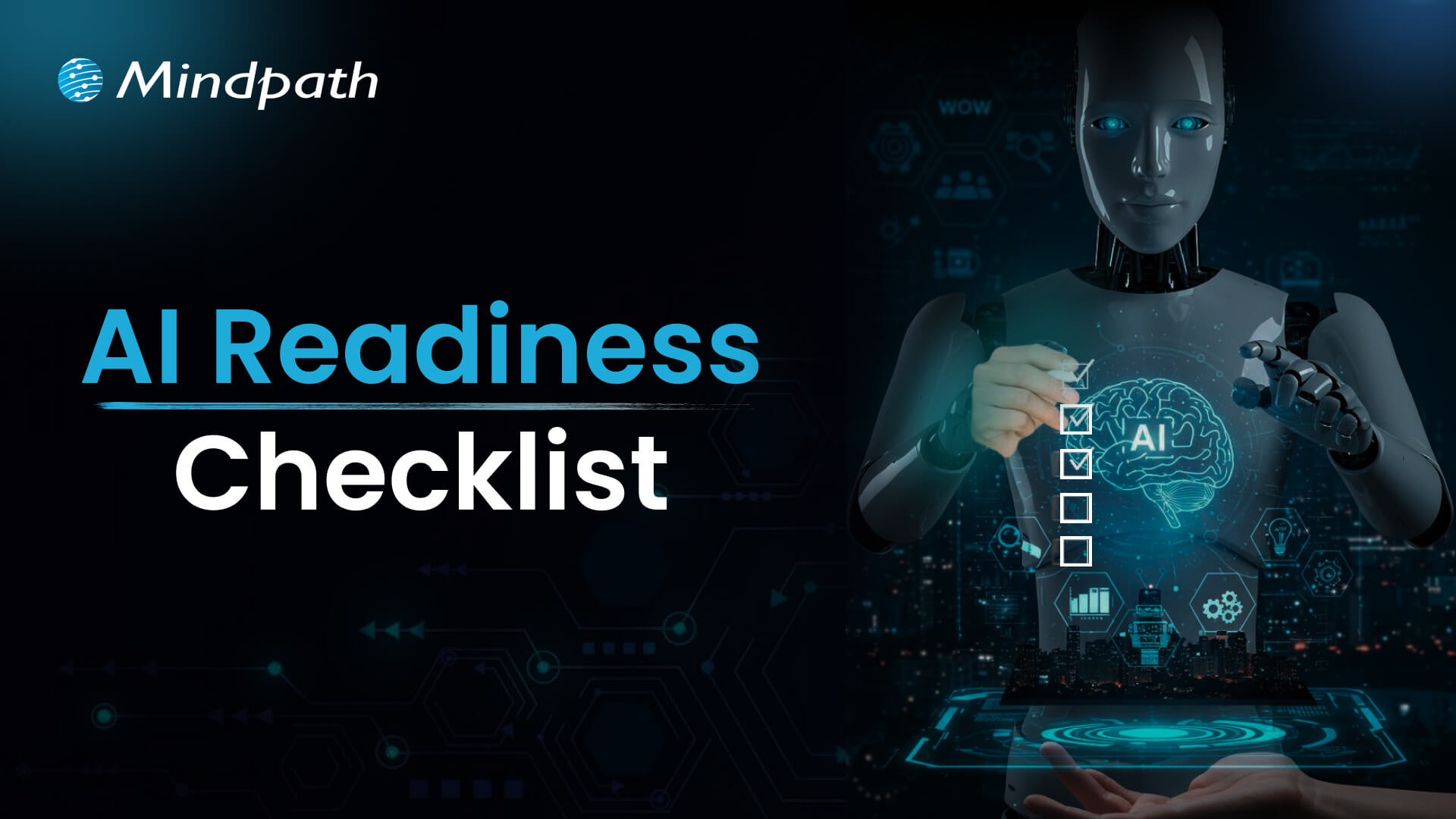Custom software development is becoming the primary driver for businesses to get ahead of the curve in 2025. Businesses no longer rely on ready-made tools as existing tools fall short of meeting unique requirements. More recently, there is a higher need for tailored solutions that incorporate an organization’s goals and can scale as the firm grows. So, how will businesses ensure their software not just helps with their operations, but ultimately provides a legitimate competitive advantage?
In today’s fast-paced digital landscape, the right software is not only technology but also a strategy in practice. With custom software, businesses foster solutions that face specific challenges and ignite innovation. This guide walks through the core aspects of custom software development, including its definition, different types, benefits, key factors, and process. With a successful approach, adequately designed custom-built systems will enable progress and lead to long-term success.
At Mindpath, our custom software development services deliver secure and scalable services that meet your business goals and enhance your business performance.
What is Custom Software Development?
Custom software development builds software solutions designed for a business’s specific needs. Instead of using generic tools developed for all businesses, many companies are developing their own custom software applications to support their unique company goals, internal workflows, and their customers. The custom software process includes planning, designing, developing custom software, and then ongoing software updates. This proactive approach might help a business increase efficiency, allow the business to expand, and create a steady stream of revenue.
The basis of this method is personalization. Developers create each feature with intention, supporting groups like marketing or sales, and enhancing customer brand participation through apps and platforms. These tailored solutions align and integrate smoothly into existing processes, improving productivity. When businesses select the right design and functionality, they receive a competitive advantage and increase their ability to outgrow the competition in a rapidly evolving digital landscape.
Types of Custom Software Solutions
Businesses face unique challenges, so they will need specific solutions to meet their goals. When used effectively, there are many kinds of custom software development solutions that can take advantage of that to drive efficiency and growth.

1. E-commerce and Online Platforms
Online businesses require more than a basic website. Custom platforms take care of payment, inventory, and customers quickly and accurately.
2. Data Management and Analytics Tools
Companies generate a never-ending amount of data every day. Analytics tools provide actionable insights from that data, which decision-makers can invest in, as there is confidence in the analytics.
3. Compliance and Regulatory Tools
The industries with strict rules continue to change at a breakneck speed. Compliance software can help you track, report, and reduce risks.
4. Customer-Facing Applications
Customers expect a seamless digital experience, and mobile apps, portals, or self-service tools can provide a simple and engaging interaction.
5. Integration and Middleware Solutions
It’s not very common for systems to connect themselves. Middleware acts as a bridge between those systems and allows for the free flow of information across platforms.
6. Enterprise Grade Solutions
Large organizations need powerful systems to maintain efficiency. ERP, CRM, and BI software all gather data into one controllable system.
7. Internal Software Systems
Day-to-day operations require intelligent systems. HR management platforms, scheduling software, and inventory solutions help maintain workflow efficiency.
8. Business Process Automation (BPA)
Manual tasks challenge the organization as a whole. Custom software development will provide a BPA solution that reduces repetitive, verifiably redundant work and frees up time.
Benefits of Custom Software Development
Each organization operates differently, so that’s why software customizations are very important. When you choose custom solutions, companies will have the tools that meet their needs and bring value over the long term.

1. Strong Security Measures
Every day, businesses deal with the threat of crime, and good protection is necessary. With custom solutions, businesses can create the security features that fit their unique needs.
2. Smarter Automation
Repetitive work that wastes time is unnecessary. Automated workflows make everything more efficient, giving teams more time to focus on innovative opportunities.
3. Future-Ready Upgrades
Technology will continue to change, and existing systems are often outdated. A custom solution is easy to upgrade, so businesses can stay up to date.
4. Cost Savings Over Time
It’s common to think of generic tools as the less costly option, but they come with hidden costs. A custom-built system can expand with the business and reduce your long-term costs.
5. Tailored to Your Business
Every company has its own workflows, and off-the-shelf, one-size-fits-all tools rarely truly fit. Custom software design considers workflows and goals to create solutions tailored to specific needs.
6. Full Control and Flexibility
Companies have the decision on how their software evolves. From additional feature requests to maintenance, a company is in control of all aspects of software.
7. Edge Over Competitors
To be different, you need unique solutions. Custom software development allows companies to create custom tools that enhance their efficiency and develop stronger customer relationships.
Step-by-Step Custom Software Development Process
Custom software development has a well-defined process to deliver the best quality product. Using the proper methodology, a custom software development business makes certain that everything is completed to specific objectives for each project. Here is the process:
1. Requirements and Planning
The process begins with identifying and researching the client’s needs to lay the right framework. The team documents goals, scope, and technology decisions in order to have a clear foundation. During this clarity stage, teams quickly put together custom-made software with a common understanding.
2. UX/UI & System Design
Once they define the requirements, designers and architects start creating wireframes, prototypes, and system architecture for the solution. They start defining the database structure, user experience (UX), and technical workflow in order to ensure everything flows and goes according to plan. Designers create all custom software to be easy to use, scalable, and low-risk.
3. Development Execution
Developers write code based on the approved design and requirements. They develop using agile and best practices and build the functional modules incrementally. Organizations will receive reliable solutions designed to promote their long-term success.
4. Testing & Quality Assurance
Testing validates both functional and performance on devices, platforms, and use cases. Testers perform unit, integration, and regression tests to detect any issues as soon as possible. This step guarantees quality standards in custom software development solutions before delivery.
5. Deployment & Continuous Support
Once testing verifies quality, the team deploys the software on-premises or in cloud environments. The team will continually provide updates, fixes, and improvements to help maintain the effectiveness of the system. We will perform a continuous improvement process to generate value and to prolong the entire application lifecycle.
Key Factors to Consider When Building Custom Software
When it comes to building a custom piece of software, it’s more than just writing the code. It’s important to pay attention to the factors that drive the success and make sure your software aligns with your vision of the future in your business.
1. Build vs Buy Decision
Evaluate if building from scratch or buying ready-made solutions best supports your custom software development goals.
2. In-House Team or Outsourcing
Choose between in-house development and outsourcing based on expertise, resources, and project scope.
3. Right Development Methodology
Select the right approach, like Agile or Waterfall, to match your project’s complexity and goals.
4. Focus on User Experience
Design software with intuitive navigation, usability, and efficiency to boost adoption
5. Scalability and Future Growth
Plan for growth by ensuring the custom software development solution can scale easily as your business expands and technology evolves.
Ready to Transform Your Business with Custom Software?
Custom software development continues to be the core driver of innovation, growth, and competitive advantage. By focusing on tailored solutions, businesses overcome unique challenges, streamline operations, and stay prepared for the future. With the right approach, companies build systems that scale seamlessly, improve efficiency, and deliver long-term results in today’s fast-moving digital world.
Partnering with a trusted custom software development company gives you access to expert guidance, advanced technologies, and proven strategies. At Mindpath, our custom software development services empower businesses to create secure, scalable, and future-ready solutions. From strategy to execution, we ensure every step adds measurable value, helping organizations achieve their vision with confidence and clarity.














